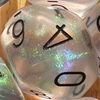Count the digits
In this investigation we are going to count the number of 1s, 2s, 3s etc in numbers. Can you predict what will happen?
In this investigation we are going to count the number of 1s, 2s, 3s etc in numbers. Can you predict what will happen?
Use the interactivities to fill in these Carroll diagrams. How do you know where to place the numbers?
This activity is based on data in the book 'If the World Were a Village'. How will you represent your chosen data for maximum effect?
A group of children are discussing the height of a tall tree. How would you go about finding out its height?
Try out this number trick. What happens with different starting numbers? What do you notice?

Watch the video of this game being played. Can you work out the rules? Which dice totals are good to get, and why?
Four bags contain a large number of 1s, 3s, 5s and 7s. Can you pick any ten numbers from the bags so that their total is 37?
A hundred square has been printed on both sides of a piece of paper. What is on the back of 100? 58? 23? 19?